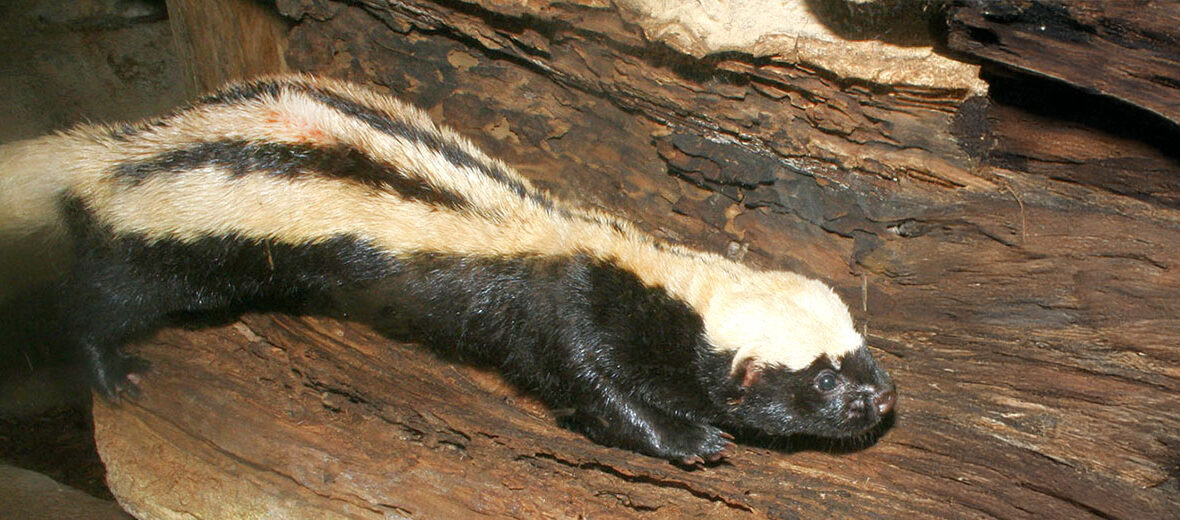
The African striped weasel, aka African weasel, striped weasel, white-naped weasel, or zorilla, hails from sub-Saharan Africa. These critters are the lone member of the genus Poecilogale. These weasels face the threats of hunting and trapping for traditional medicine. However, they are abundant, although rare to see, and thus listed as Least Concern by the IUCN. Their population trend is unknown.
First the Stats…
Scientific name: Poecilogale albinucha
Weight: Up to 13 ounces
Length: Up to 13.8 inches, plus up to a 8 inch tail
Lifespan: Up to 6 years
Now on to the Facts!
1.) They prefer savanna and veld grassland habitats. However, these critters have also been spotted in semideserts, rainforests, fynbos, and even land used by humans like pine plantations and agricultural land.
2.) A powerful digger, they excavate burrows which are inhabited when not hunting for prey.
3.) Owls and domestic dogs are known to prey on these weasels.
4.) While they typically flee from a threat, if cornered, they will emit noises, engage in fake charges, or produce a noxious fluid sprayed from their perineal glands.
5.) These weasels almost exclusively prey on small rodents, but will also prey on birds.
But wait, there’s more on the African striped weasel!
6.) When a prey animal is caught, they will bite the base of the skull and kick the animal’s back in an effort to dislocate the spine from the skull thus paralyzing their prey.
7.) They rarely drink standing water, instead obtaining their water requirements from the food they eat.
Did you know…?
These weasels can spray their musk up to 3.3 feet.
8.) Like other weasels, they are solitary and only come together to mate. That being said, they have been documented in small 4 member groups from time to time.
9.) Being elusive and nocturnal (active at night), they are seldom seen.
10.) These weasels were first described in 1864, by British zoologist John Edward Gray.
But wait, there’s still more on the African striped weasel!
11.) The breeding season lasts from spring till the end of summer.
12.) Females undergo up to a 30 day gestation (pregnancy) that yields up to 3 pups.
13.) They are often parasitized by tapeworms.
14.) Their musk has a heavy, sweet, and pungent odor that is described as foul smelling. However, it is not as powerful as the musk of a skunk.
Now a Short African Striped Weasel Video!
This video talks about weasels in general.
Be sure to share & comment below! Also, check out the Critter Science YouTube channel. Videos added regularly!
Want to suggest a critter for me to write about? Let me know here.
Some source material acquired from: Wikipedia & IUCN
Photo credit: Devonpike




